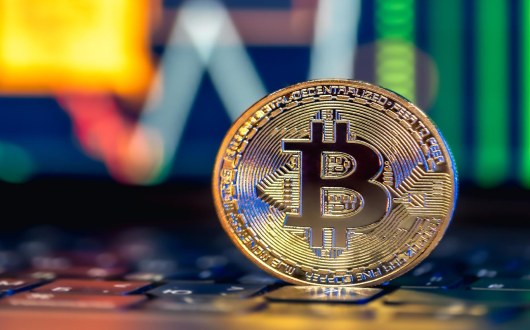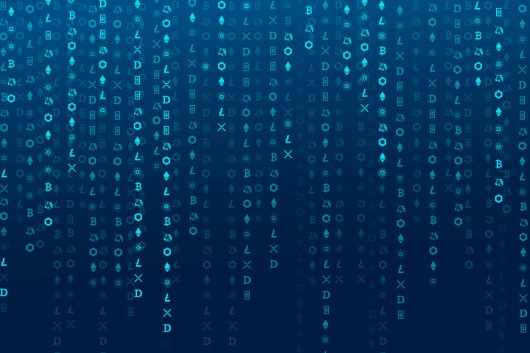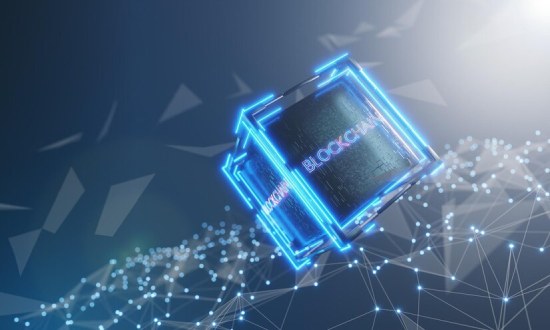-
In the rapidly evolving world of blockchain technology, Ordinals have opened a new frontier on the Bitcoin network, enabling the inscription of unique data on individual satoshis (the smallest unit of Bitcoin). This blockchain development service has led to the emergence of Bitcoin-native NFTs and BRC-20 tokens, expanding Bitcoin's functionality beyond its original use case as a peer-to-peer electronic cash system.
Creating an Ordinals wallet requires a blend of Bitcoin fundamentals, knowledge of Ordinals theory, and understanding of blockchain development best practices. This extensive guide provides a 360-degree overview of Ordinals, including the technical underpinnings, wallet architecture, development steps, security measures, and much more. It is designed to be both technical and easy to understand, ensuring that a broad range of readers, from blockchain enthusiasts to professional developers, can derive significant value.
What are Ordinals?
Ordinals represent a novel way to inscribe and track unique data on the Bitcoin blockchain. The concept, introduced by Casey Rodarmor in January 2023, hinges on the idea that each individual satoshi (sat) can be “numbered” or “tagged” with additional data, allowing for the creation of unique, non-fungible assets on Bitcoin.
Why Ordinals Matter
Unlocking Bitcoin's Potential: Ordinals extend Bitcoin's functionality beyond a simple store of value or medium of exchange, enabling NFT-like assets on the most secure and widely adopted blockchain.
Low-Level Ownership: Instead of representing ownership at the wallet level, Ordinals focus on ownership at the individual satoshi level, giving rise to new paradigms in digital scarcity and creativity.
Resurgence of On-Chain Innovation: Historically, Bitcoin development has been more conservative, but Ordinals spark fresh dialogue about smart contracts, layer-2 solutions, and extended Bitcoin-based utilities.
This guide explores how to build a secure, user-friendly wallet that supports the inscription, storage, and transfer of Ordinals—catering to developers, entrepreneurs, and tech-savvy enthusiasts eager to explore this burgeoning domain.
Ordinals: The Bitcoin NFT Revolution
Ordinals effectively create Bitcoin-native NFTs (non-fungible tokens) by assigning an “ordinal number” to each satoshi. These “digitally inscribed” satoshis carry unique data, analogous to how NFTs on Ethereum are linked to specific token IDs.
Key Advantages Over Traditional NFTs
Bitcoin's Security: Bitcoin has the longest-established proof-of-work network, making it highly secure and resistant to attacks.
True Scarcity: Satoshis are inherently limited (each Bitcoin can only be split into 100 million sats), providing an in-built scarcity model.
No Additional Token Standard: Unlike Ethereum's ERC-721 or ERC-1155, Ordinals embed data directly into the Bitcoin blockchain without requiring new base-layer token standards.
The Emergence of BRC-20 Tokens
The Ordinals ecosystem gave rise to BRC-20 tokens, an experimental token standard that uses text-based inscriptions on satoshis to define “fungible” tokens on Bitcoin. While these are not part of the official Bitcoin protocol, they have quickly gained attention due to their simplicity and novelty.
Also, Read | A Comprehensive Guide to the Runes Standard on Bitcoin
Key Concepts in Ordinals
Before delving into wallet development, understanding the fundamental concepts behind Ordinals is crucial.
Satoshis
A satoshi is the smallest unit of Bitcoin—1 sat = 0.00000001 BTC. Ordinals tag each satoshi with a unique “ordinal number,” turning it into a distinct entity.
Ordinal Theory
The Ordinal Theory tracks each satoshi through each block, transaction, and output. As sats move in the Bitcoin network, this theory keeps a record of which transaction holds each unique, inscribed sat.
Inscriptions
Inscriptions enable developers and users to write data (images, text, code) onto individual satoshis. By attaching metadata to a specific sat, that sat effectively becomes a one-of-a-kind digital artifact—the Bitcoin equivalent of an NFT.
Ordering
Satoshis are ordered according to the sequence in which they are mined. The “first sat” from the genesis block is assigned ordinal #0, and so forth. This ordering system forms the basis for the identity of each Satoshi within the Bitcoin network.
What Is an Ordinals Wallet?
An Ordinals wallet is a cryptocurrency wallet designed to handle Bitcoin transactions while also supporting the tracking, display, and transfer of inscribed satoshis. Unlike conventional Bitcoin wallets, an Ordinals wallet:
Identifies Specific Satoshis: Tracks which sats in a user's balance carry inscriptions.
Displays Metadata: Shows images, text, or other media linked to inscribed sats.
Facilitates Specialized Transactions: Allows users to send and receive Ordinals without inadvertently breaking or merging them with non-inscribed sats.
The ability to manage both standard BTC and unique Ordinals in a single interface sets the stage for a new era of digital asset management on Bitcoin.
Also, Check | Demystifying Bitcoin Ordinals : What You Need to Know
Core Architecture of an Ordinals Wallet
A robust Ordinals wallet typically comprises three key layers:
Application Layer: This is the user-facing interface (desktop, mobile, or web application). It communicates with the back-end services and provides a graphical user interface (GUI) for sending, receiving, and viewing Ordinals.
Service Layer: Handles core business logic, including:
- Checking if a UTXO (Unspent Transaction Output) contains inscribed sats.
- Managing transaction parsing to avoid merging inscribed and non-inscribed satoshis.
- Interfacing with third-party APIs (e.g., block explorers or indexing nodes).
Blockchain Layer:
- The Bitcoin network itself, which secures all transactions and inscribes data.
- Node / Indexer that keeps track of the entire blockchain state, including specialized Ordinals indexers to identify which sats carry inscriptions.
UTXO Management and Ordinals
Since Bitcoin uses the UTXO (Unspent Transaction Output) model, an Ordinals wallet must carefully manage UTXOs to preserve inscriptions. When a user wants to send an inscribed sat, the wallet must ensure that the transaction remains atomic, preventing partial use of UTXOs that would separate the inscribed sat from its unique data.
Also, Discover | Satoshi Nakamoto's Last Email Reveals Bitcoin Creator's Thoughts
Essential Features of an Ordinals Wallet
Inscriptions and Viewing
Inscription Management: Allow users to mint or inscribe new data onto sats if they have the necessary tools and protocols integrated.
Display Inscriptions: The wallet should render images, text, or other media in a visually appealing format.
Transaction Customization
Fee Control: Users need to set their transaction fee in BTC, balancing speed and cost.
UTXO Selection: Advanced UTXO selection ensures inscribed sats remain intact.
Security and Backup
Seed Phrase Management: Ordinals wallets must provide mnemonic seed phrases (BIP39/BIP44) for backup and restoration.
Hardware Wallet Support: Integration with devices like Ledger or Trezor for added security.
2-Factor Authentication (2FA): An optional layer to enhance user safety.
Compatibility and Interoperability
Multi-Platform: Desktop, mobile, or web versions.
Integration with Existing Services: A robust API layer to interface with marketplaces, indexers, or DApps that use Ordinals.
Explorer Functionality: Direct links to block explorers that can parse Ordinals data.
Notifications and Alerts
Transaction Alerts: Real-time updates on transaction confirmations.
Price Feeds: If relevant, show the BTC/USD price or the estimated value of an inscribed sat (though the latter is more speculative).
Also, Read | A Comprehensive Exploration of Ordinal Marketplace Development
Development Environment and Tools
Building an Ordinals wallet requires an environment equipped to handle both Bitcoin and Ordinals complexities.
Bitcoin Core
- Bitcoin Core is essential for running a full node and ensuring accurate, trust-minimized transaction data. You can either run a local node or use third-party node providers.
Ordinals Indexer or API
- Community-driven tools like the Ordinals Protocol or specialized indexers can track inscriptions.
- APIs such as ordinals.com (if available) or other community projects may provide a direct feed of indexing data.
Programming Languages and Frameworks
- Node.js: Often used for server-side logic and back-end services.
- React / Vue.js: Common for front-end development with a rich UI.
- Rust / Go: Favored by some developers for performance-critical components or indexing functionalities.
- Python: Popular for scripting, data parsing, and rapid prototyping.
Libraries and SDKs
- bitcoinjs-lib / Bitcore: JavaScript libraries to handle Bitcoin transaction creation, signing, and broadcasting.
- PyBitcoinTools: A Python library for handling Bitcoin operations.
- gRPC / REST: For interacting with nodes, wallets, or other microservices.
You may also like to explore | A Quick Guide to BRC 20 Token Development
Step-by-Step Guide to Building an Ordinals Wallet
Below is an outline of the major steps involved in constructing a functional Ordinals wallet. While the specifics may vary, this guide offers a high-level roadmap.
Step 1: Define Project Scope and Architecture
Feature List: Decide which features—inscription creation, viewing, sending, receiving—your wallet will support from day one.
Architecture Diagram: Sketch out your application layer, service layer, and blockchain integrations.
Security Approach: Plan for seed phrase generation, encryption, and secure key storage.
Step 2: Set Up Your Development Environment
Install Bitcoin Core: Configure it to run in pruned mode or full mode, depending on storage availability.
Install Necessary Libraries: For Node.js, for instance, install bitcoinjs-lib or bitcore-lib.
Run or connect to an Ordinals Indexer: This could be a local instance or a remote service.
Step 3: Implement Basic Bitcoin Wallet Functionality
Wallet Initialization: Use BIP39 to generate a mnemonic seed phrase, and BIP44 for standard Bitcoin address derivation paths.
Address Generation: Implement a method to derive Ordinals-compatible addresses (e.g., Taproot addresses if you plan to store inscriptions in Taproot outputs).
Balance and UTXO Retrieval: Query the Bitcoin network for UTXOs linked to your derived addresses.
Step 4: Add Ordinals-Specific Logic
Identify Inscribed UTXOs: Modify your UTXO scanning to detect if a UTXO contains an inscribed sat. This generally requires parsing the Ordinals indexer data or analyzing on-chain scripts to identify inscription references.
Inscription Display: Fetch metadata from the relevant on-chain data or external storage (like IPFS, if used in conjunction with Ordinals). Render the images, text, or other media in the user interface.
Step 5: Implement Send/Receive Features for Inscribed Sats
Selective UTXO Management: Ensure that you only spend the desired inscribed sat and not inadvertently merge it with non-inscribed sats.
Transaction Building: Construct raw transactions carefully, marking the output that will hold the inscribed sat.
Transaction Signing: Use private keys derived from the seed phrase to sign the transaction.
Broadcasting: Send the signed transaction to the Bitcoin network, monitoring its confirmation status.
Step 6: Integrate Advanced Functionalities
Multi-Signature Support: For higher-value Ordinals holdings, implement a multi-sig scheme (e.g., 2-of-3).
Marketplace Integration: If you plan to enable direct NFT trading, integrate with existing Ordinals marketplaces or build your own exchange mechanism.
BRC-20 Integration: Expand your wallet's capabilities to store and display BRC-20 tokens, using text-based inscriptions to track fungible tokens.
Step 7: Security Features
Encryption: Secure the wallet's private keys with AES-256 or similar encryption.
Hardware Wallet Integration: Provide an option for advanced users to sign Ordinals transactions from a hardware device.
Step 8: Testing and QA
Unit Tests: Write extensive tests for each function—address derivation, transaction construction, etc.
Integration Tests: Ensure that the wallet interacts smoothly with the Ordinals indexer, third-party APIs, and the Bitcoin network.
User Acceptance Testing: Allow a closed group of testers to provide feedback before a public release.
Step 9: Deployment and Maintenance
Deployment Pipeline: Automate your build, testing, and deployment process.
Monitoring: Track wallet performance, node synchronization, and user transactions in real-time.
Updates: Maintain an active update schedule to patch security vulnerabilities and add new features.
You might be interested in | ERC-20 vs BRC-20 Token Standards | A Comparative Analysis
Security Best Practices
Security remains paramount when dealing with blockchain assets, especially as Ordinals-based assets can hold significant value.
Seed Phrase Protection
- Encourage users to write down their mnemonic in a safe location.
- Avoid storing unencrypted mnemonic data on local storage or remote databases.
Hardware Wallet Compatibility
- Consider building your wallet to support hardware devices like Ledger or Trezor, which store private keys in secure elements.
Transaction Review
- Implement clear, user-friendly prompts that display transaction details (UTXOs, fees, outputs, etc.) before signing.
Multi-Factor Authentication (MFA)
- Optional, but for web or mobile wallets, an extra authentication layer can mitigate unauthorized access.
Regular Audits
- Conduct internal code reviews and, if budget permits, hire external security auditors.
- Utilize bug bounty programs to incentivize security researchers to find vulnerabilities.
Use of Reputable Libraries
- Ensure that libraries like bitcoinjs-lib or bitcore-lib are kept up-to-date and verified against known security advisories.
Network Security
- Encrypt all communication channels with SSL/TLS.
- Employ firewalls, intrusion detection systems, and minimal open ports on your servers.
Integrating BRC-20 Token Functionality
While Ordinals wallet development primarily revolves around inscribed sats (NFTs), the emergence of BRC-20 tokens introduces a new layer of functionality—text-based, fungible tokens on Bitcoin.
Key Concepts
Text-Based Tokens: Unlike Ethereum, where token balances are stored in smart contracts, BRC-20 tokens store their metadata via text inscriptions on Bitcoin.
Minting and Transfer: BRC-20 tokens define a ticker (e.g., “ORDI”) and a total supply, minted and distributed via specific inscription data.
Wallet Adaptations for BRC-20
Parsing BRC-20 Data: You must handle the specialized JSON structure that denotes minting, transfers, and token balances.
Display Balances: Provide a balance sheet for each user's BRC-20 holdings.
Send/Receive Workflows: Distinguish between standard BTC transactions and BRC-20 token transactions, ensuring the correct inscriptions are used.
Potential Use Cases
Tokenized Communities: Rewards or membership tokens minted directly on Bitcoin.
Cross-Chain Bridges: Bridging BRC-20 tokens to Ethereum or other networks.
DeFi Protocols: While still nascent, BRC-20 tokens could eventually be integrated into Bitcoin-based DeFi solutions.
You may also like to discover | A Detailed Guide to BRC-20 Token Launchpad Development
Testing, Deployment, and Maintenance
Testing Strategies
Unit Testing: Validate each function in isolation—key generation, transaction building, inscription retrieval.
Integration Testing: Confirm the wallet can correctly parse data from Ordinals indexers and third-party services.
Performance Testing: Assess how the wallet performs under load—e.g., multiple simultaneous inscription checks or transaction broadcasts.
Deployment
Continuous Integration/Continuous Deployment (CI/CD): Automate your build pipeline with tools like Jenkins, GitLab CI, or GitHub Actions.
Dockerization: Containerize services to streamline environment configuration and reduce dependency conflicts.
Version Control: Maintain a well-structured repository on GitHub or GitLab, tagging stable releases for easy rollback if issues arise.
Maintenance
Regular Updates: Track changes to Bitcoin Core, the Ordinals protocol, and BRC-20 standards.
User Feedback: Employ analytics and direct feedback channels to identify UX friction points or new feature requests.
Security Patching: Remain vigilant about new vulnerabilities in open-source dependencies.
Challenges, Limitations, and Best Practices
Challenges and Limitations
Network Congestion: Bitcoin's block space is limited, and Ordinals can contribute to congestion, affecting transaction fees.
Protocol Upgrades: Ordinals and BRC-20 are still evolving, potentially requiring frequent updates to wallet logic.
Legal and Regulatory Uncertainty: The classification of inscribed assets may vary by jurisdiction.
User Education: Many end-users are unfamiliar with UTXO management and the nuances of Ordinals, requiring robust tutorials and UX guidance.
Best Practices for Success
Keep It Simple: Offer a straightforward user interface that hides the complexity of UTXOs and addresses.
Focus on Security: Users entrust you with potentially high-value digital assets—any security lapse can be devastating.
Community Engagement: Engage with the Ordinals community to stay ahead of protocol updates, best practices, and evolving standards.
Documentation: Provide comprehensive documentation for your wallet's features, both for end-users and developers who may want to integrate your solution.
Future Outlook for Ordinals
Ordinals have injected fresh excitement into the Bitcoin ecosystem. As protocols mature, we can expect:
Enhanced Wallet Features: More wallets will incorporate advanced functionalities such as inscription creation, multi-sig Ordinals management, or atomic swaps with other chains.
Evolving Standards: BRC-20 and future protocols will likely refine how fungible tokens operate on Bitcoin.
Layer-2 Solutions: Projects like Lightning Network or other sidechains might integrate Ordinals, improving scalability and reducing fees.
Broadening Use Cases: From digital identity solutions to tokenized real-world assets, Ordinals could expand into numerous industries.
In the broader landscape, interoperability between Bitcoin Ordinals and other blockchain ecosystems (Ethereum, Solana, Polygon, etc.) may unlock cross-chain NFT markets and novel decentralized finance (DeFi) applications.
Also, Read | BRC-20 Wallet Development | What You Need To Know
Frequently Asked Questions (FAQ)
Q1: How do Ordinals differ from traditional NFTs on Ethereum or Solana?
A1: Traditional NFTs rely on specialized token standards (e.g., ERC-721, SPL). Ordinals are embedded directly in Bitcoin's base layer through unique inscriptions on individual satoshis, leveraging Bitcoin's security and existing infrastructure.
Q2: Are Ordinals and BRC-20 tokens officially part of Bitcoin Core?
A2: No. Ordinals and BRC-20 tokens operate as additional layers or protocols on top of Bitcoin. They are not integrated into Bitcoin Core but use Bitcoin's existing block space to store and track data.
Q3: Can I accidentally “lose” my inscribed sat by sending it in a normal Bitcoin transaction?
A3: Yes, if your wallet or the sending mechanism does not preserve the specific UTXO containing the inscribed sat. That's why an Ordinals-capable wallet must handle UTXO selection meticulously.
Q4: What are the costs associated with inscribing data on a sat?
A4: Costs depend on Bitcoin transaction fees and the size of the data. Larger inscriptions require more block space, leading to higher transaction costs.
Q5: Do hardware wallets support Ordinals?
A5: As of now, hardware wallets do not natively display or handle Ordinals data. However, you can still use them to sign Bitcoin transactions containing inscribed sats, provided your software wallet supports it.
Q6: Is there a risk of Bitcoin's mempool getting congested due to inscriptions?
A6: Yes. A surge in inscription activity can lead to higher fees and longer confirmation times, similar to NFT or DeFi booms on other chains.
Q7: How do I store and view the actual media (images, text) inscribed on a sat?
A7: Inscriptions are stored on-chain within Bitcoin's transaction data. Wallets or indexers parse this data and display the media. Some inscriptions may reference external storage like IPFS, but many store raw data within the transaction itself.
Q8: Is a special address type (e.g., Taproot) required for Ordinals?
A8: Although not mandatory, Taproot addresses (P2TR) are often used because they allow more flexible scripting capabilities and can embed data in a more compact manner than older address types.
Also, Check | BRC-721E Token Standard | Enabling Blockchain Art Transactions
Conclusion
Ordinals have ushered in a new chapter for Bitcoin, expanding its functionality beyond “digital gold” to encompass digital collectibles, NFT-like artifacts, and BRC-20 tokens. For developers and businesses, building an Ordinals wallet represents a significant opportunity to capitalize on Bitcoin's security while tapping into the creativity and excitement of the emerging NFT ecosystem.
From understanding the core concepts of Ordinals to constructing a wallet architecture and implementing advanced functionalities like BRC-20 token support, this guide lays out a structured approach. By prioritizing security, user experience, and continuous updates, a well-executed Ordinals wallet can position itself at the forefront of innovation in the Bitcoin ecosystem.
If you are planning to explore the potential of blockchain and other emerging technologies for your project development, connect with our skilled blockchain developers to get started.

Our Offices
INDIA
Emaar Digital Greens, Sector 61,
Gurugram, Haryana
122011.
Welldone Tech Park,
Sector 48, Sohna road,
Gurugram, Haryana
122018.















